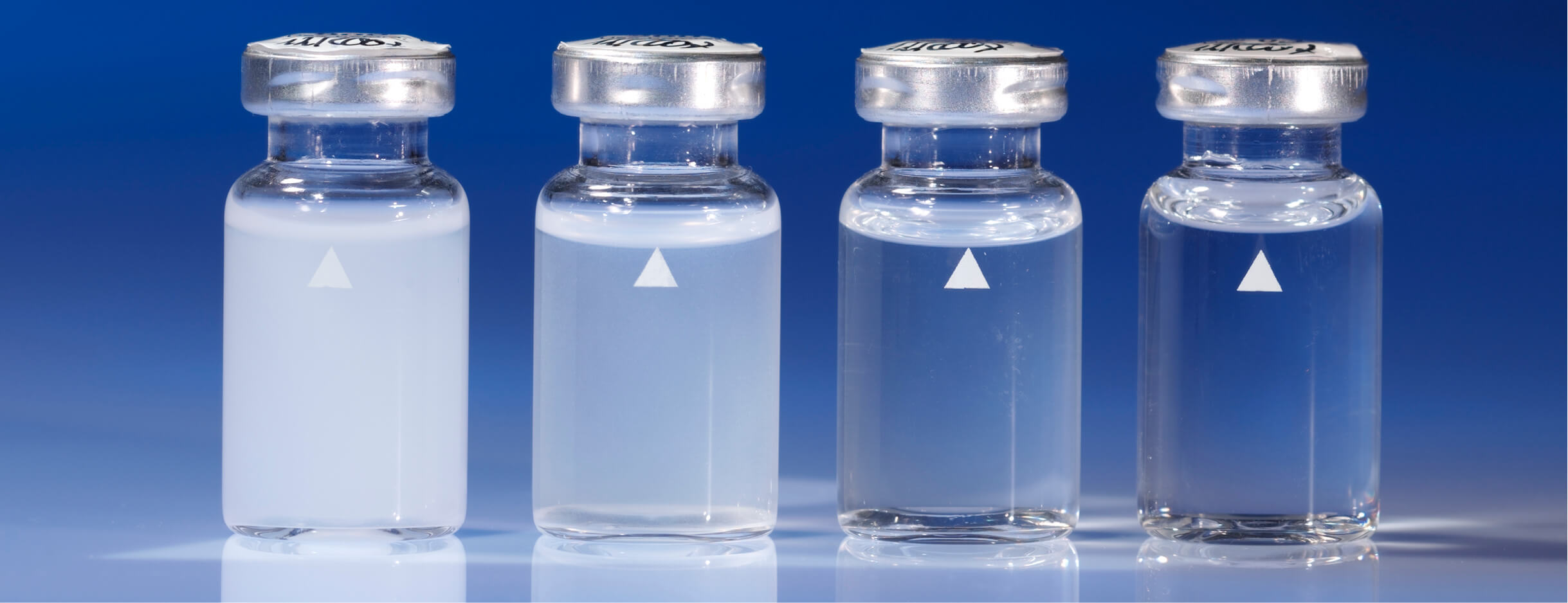Meça as suas amostras de água com precisão inigualável - quer tenham valores de turbidez baixos ou altos. O que costumava ser um problema real foi resolvido pelos nossos peritos: Multipath 90° BLAC® cobre uma gama de turbidez única.
A turbidity value is a way of quantifying the cloudiness, or haziness of a sample. It is calculated, using an instrument called a turbidimeter, by measuring the amount of light scattered or blocked by suspended particles in a water sample. We often think of turbidity in terms of things like microorganisms, silt or other materials - but turbidity can literally anything present in the sample that causes the light beam to scatter. Turbidimeters are available as portable, benchtop or online instruments.
A ISO (Organização Internacional de Normalização) e a EPA dos EUA são as duas principais organizações que estabelecem os critérios de concepção de um opacímetro e emitem especificações ou mesmo regulamentos para a medição de turbidez.
In pool water, turbidity is an indication for the effectiveness of the filter system and cleaning agents. In drinking water it indicates the possible bacterial growth. In sewage treatment plants the turbidity is an indicator of quality in the cleaning procedures. In industries, turbidity is a quality criterion for products. The cause of turbidity is usually tiny small particles or droplets that do not dissolve in the surrounding liquids.
In pool water, turbidity is an indication for the effectiveness of the filter system and cleaning agents. In drinking water it indicates the possible bacterial growth.
If a light beam hits a liquid that is clouded by small, undissolved particles, part of the light is scattered to the side of the incoming beam. The phenomenon is called the Tyndall effect.
The scattering depends on the way the light hits the particle, but also on its shape.
A detector placed at 90° detects the scattering caused by the particles. The greater the scatter, the higher the turbidity value. Depending on the application or industry in which the device is used, additional scattered light detectors can be used at other angles.
When disinfecting surface water or water that is affected by surface water during treatment in waterworks, checking the turbidity is of crucial importance for choosing the optimum disinfection effiency. With the PTV 1000 series instruments, Lovibond® has developed on-line turbidimeters that successfully handles the usual problems in this area in practice. This has now been confirmed by a long-term test in the drinking water treatment of a Dutch waterworks.
A monitorização da turbidez do parâmetro indicador com um valor limite de 1 NTU / FNU é uma das obrigações legais do operador de uma estação de tratamento de água e é considerada cumprida se este valor for mantido na saída da estação de tratamento de água. Os laboratórios
A série Lovibond® PTV de Turbidímetros de Processo oferece quatro fontes diferentes de luz incidente. Estas diferentes fontes de luz foram necessárias para cumprir os requisitos regulamentares, que diferem em todo o mundo. As variações PTV 1000 WL, PTV 2000 e PTV 6000 são aprovadas pela USEPA ao abrigo da Lei da Água Potável Segura e são aplicáveis para utilização na comunicação de efluentes filtrantes e turbidezes de efluentes filtrantes combinados de instalações de água potável. A versão PTV 1000 IR cumpre os critérios de concepção da ISO 7027 para medição de turbidez inferior a 40 FNU3. Em relação a estas três versões de turbidímetros, é apenas a fonte de luz que difere. Embora estas quatro fontes de luz sejam aprovadas por regulamentação, espera-se que produzam resultados ligeiramente diferentes. Estas diferenças e as suas causas serão discutidas.
